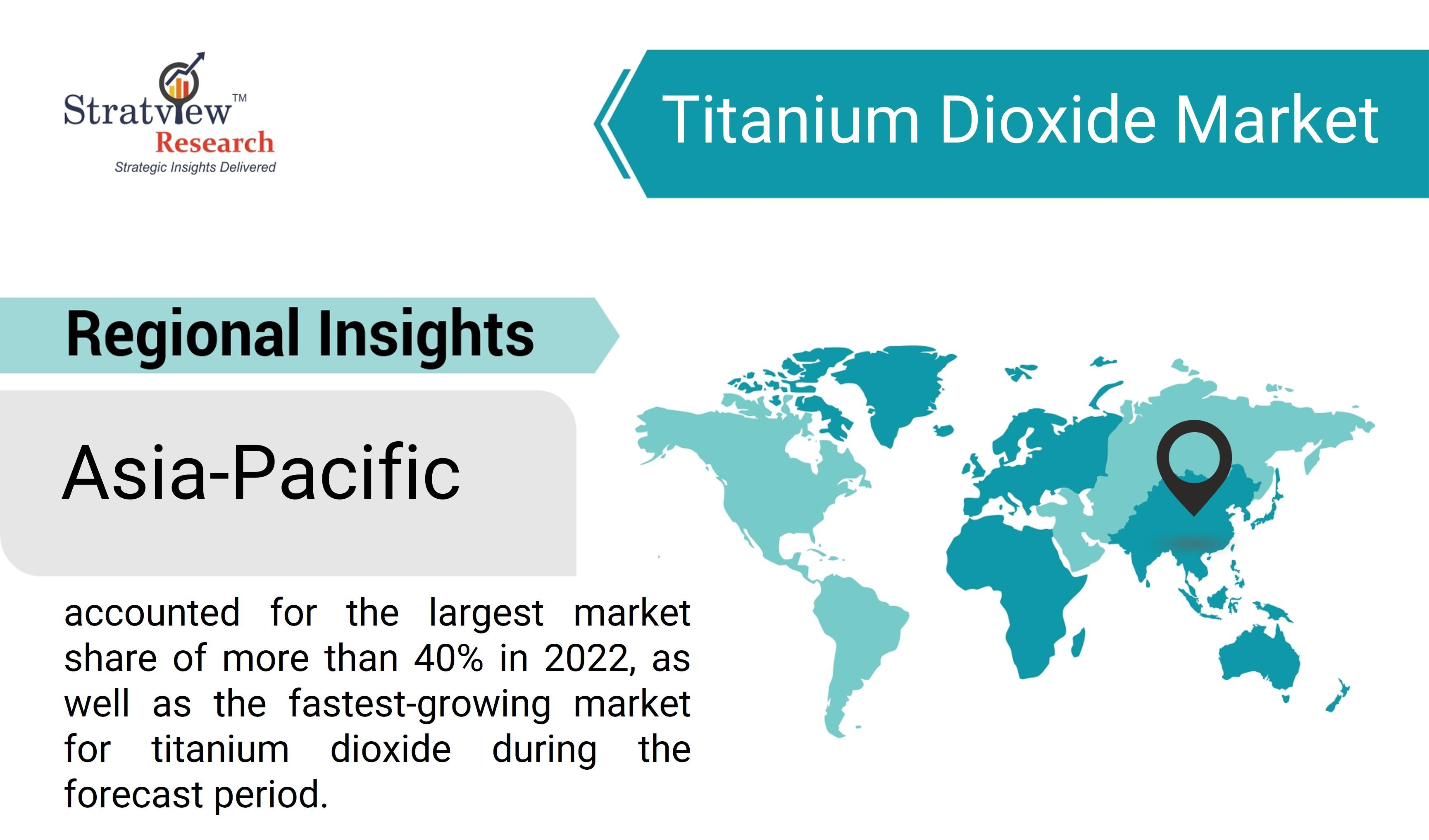Key Drivers Shaping the Titanium Dioxide Industry

Titanium dioxide (TiO₂) is a critical ingredient in a variety of products ranging from paints and coatings to plastics, paper, and personal care items. The titanium dioxide industry is influenced by several key drivers that impact its growth and development. Understanding these drivers is essential for stakeholders to navigate the market effectively and capitalize on emerging opportunities. This article delves into the primary factors shaping the titanium dioxide industry.
According to Stratview Research, the titanium dioxide market was estimated at USD 22.26 billion in 2022 and is likely to grow at a CAGR of 5.77% during 2023-2028 to reach USD 31.24 billion in 2028.
1. Growth in End-Use Industries
The demand for titanium dioxide is closely tied to the growth of its end-use industries, particularly paints and coatings, plastics, and paper:
Paints and Coatings: As a vital component in paints and coatings, titanium dioxide provides opacity, brightness, and durability. The construction boom, especially in emerging economies, and the recovery of the automotive sector post-pandemic, are major factors driving demand in this segment.
Plastics: Titanium dioxide is widely used in the plastics industry to enhance color, opacity, and UV resistance. The increasing use of plastics in packaging, automotive, and consumer goods continues to propel the demand for TiO₂.
Paper: In the paper industry, titanium dioxide improves brightness and opacity, which are essential for high-quality printing papers and packaging materials.
2. Technological Advancements
Technological innovations are significantly influencing the titanium dioxide industry. Key advancements include:
Nanotechnology: The development of titanium dioxide nanoparticles has opened up new applications in cosmetics, sunscreens, and medical devices due to their enhanced UV protection and antibacterial properties.
Sustainable Production Processes: Advances in production technologies aim to reduce the environmental footprint of TiO₂ manufacturing. Innovations in the chloride process and the recycling of waste materials are examples of efforts to make production more sustainable and cost-effective.
3. Environmental Regulations
Environmental concerns and regulatory frameworks play a crucial role in shaping the titanium dioxide industry. Governments and regulatory bodies are imposing stricter guidelines on the production and use of TiO₂:
EU Classification: The European Union has classified titanium dioxide as a potential carcinogen when inhaled in powder form, prompting manufacturers to adopt safer handling practices and explore alternative formulations.
Sustainability Initiatives: Regulations aimed at reducing carbon emissions and promoting sustainability are driving the industry towards greener production methods and the use of eco-friendly materials.
4. Economic and Industrial Growth
The overall economic and industrial growth in various regions significantly impacts the titanium dioxide market:
Emerging Markets: Rapid industrialization and urbanization in countries like China, India, and Brazil are boosting demand for TiO₂ in construction, automotive, and consumer goods industries.
Developed Economies: In North America and Europe, the focus is on advanced applications of titanium dioxide, such as in renewable energy technologies and high-performance coatings, driven by technological innovation and sustainability goals.
5. Raw Material Availability and Pricing
The availability and cost of raw materials used in titanium dioxide production, such as ilmenite and rutile, directly affect the industry's dynamics:
Supply Chain Disruptions: Fluctuations in the supply of raw materials due to geopolitical tensions, mining regulations, and environmental concerns can impact TiO₂ production and pricing.
Cost Management: Efficient management of raw material costs and supply chain logistics is crucial for maintaining profitability and competitiveness in the market.
6. Consumer Preferences and Market Trends
Evolving consumer preferences and market trends are also shaping the titanium dioxide industry:
Eco-friendly Products: There is a growing demand for eco-friendly and sustainable products, pushing manufacturers to develop TiO₂ formulations with lower environmental impact.
Aesthetic and Performance Standards: Increasing consumer expectations for high-quality, aesthetically pleasing, and durable products are driving innovations in titanium dioxide applications.
Conclusion
The titanium dioxide industry is influenced by a complex interplay of factors including growth in end-use industries, technological advancements, environmental regulations, economic conditions, raw material availability, and changing consumer preferences. By understanding and responding to these key drivers, industry stakeholders can strategically navigate the market, innovate, and capitalize on emerging opportunities. As the global economy continues to evolve, the titanium dioxide industry is poised for significant growth, driven by ongoing developments and market demands.
- Questions and Answers
- Opinion
- Story/Motivational/Inspiring
- Technology
- Art
- Causes
- Crafts
- Dance
- Drinks
- Film/Movie
- Fitness
- Food
- Games
- Gardening
- Health
- Home
- Literature
- Music
- Networking
- Other
- Party
- Religion
- Shopping
- Sports
- Theater
- Wellness
- News
- Culture
- War machines and policy

